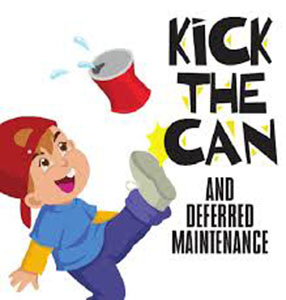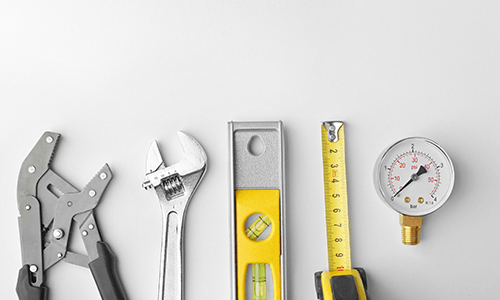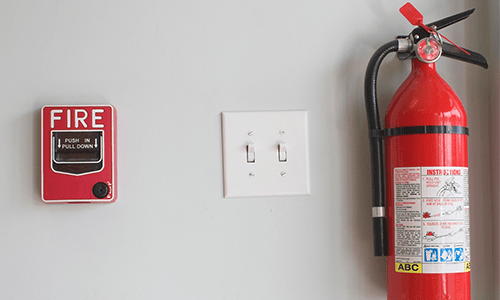In the childhood game of “Kick the Can,” one person is designated “”t” and an empty can is placed in the open playing field. With eyes closed, “It” counts to an agreed upon number, and the other players run and hide. It then tries to find and tag each of the players, always keeping a watchful eye on the can. Any player who is tagged is sent to the “jail,” usually in plain sight of the can. The rest of the free players attempt to kick the can before being tagged out. If they can kick the can without being caught, they set all the captured players free. In association life, the deferred maintenance analogy of “kicking the can” further down the road, often means placing homeowners in financial jail.
Anyone that owns a car knows they must change the oil, transmission fluid, and rotate the tires on a regular basis for the car to operate correctly. The car owner will spend $60-$80 every three months maintaining their car to prevent spending several thousands of dollars to replace an engine or transmission. The owner sees the value in spending a little to save a lot down the road. Why is it that homeowners refuse to spend a few thousand dollars a year to potentially save tens or even hundreds of thousands of dollars in the future? Homeowners tend to look at the price tag of maintenance instead of looking at the value that performing regular maintenance brings to their home or community. Wouldn’t you much rather spend $10,000 to replace a few rotten sections of siding and paint every five years than spend $100,000 in five years to replace the siding? Seems logical; however, regular maintenance is overlooked by homeowners all the time and in doing so, the downward spiral of deferred maintenance begins.
There is no such thing as “maintenance free living.” All buildings require maintenance. Some buildings require more maintenance than others, but all buildings require maintenance. The following items should be performed every year for every building that is in existence:
- Inspect sealants (caulking) around all windows, doors, and other wall penetrations such as spigots, light fixtures, electrical outlets, etc.
- Inspect the roof to ensure there are no missing shingles, damaged roof vents, failed flashings, open roof seams, etc.
- Inspect all painted items to ensure the finish is not wearing off.
- Check light bulbs, emergency lights, fire extinguishers, etc.

The above annual maintenance work is similar to changing your oil or getting a physical each year. The purpose of maintenance is to catch issues before they turn into large problems. When homeowners or association boards decide to defer regular maintenance because they do not want to spend the money, they open a plethora of eventual consequences. So, what happens when the homeowner or association board neglects to perform simple maintenance? The short answer is they end up spending more money because small maintenance projects turn into large replacement projects.
Water is a major enemy of buildings. Regular maintenance can ensure that water is kept away from critical building components. Water damage to a building can be one of the most expensive items to repair and in most cases simple routine maintenance can keep most water damage from occurring. Simple maintenance such as replacing failed caulk joints can prevent major damage to windows, siding, brick, and interior finishes. Unfortunately, many buildings were not built with appropriate flashings to keep water from entering the wall systems so the building is reliant on caulk to keep the water outside of the wall.
Once water gets inside a wall, it often becomes trapped and trapped water generally equals major problems. Windows made of wood can rot in place for years without the homeowner ever knowing. Other times water can make its way past the windows and damage the interior drywall. Moisture trapped in walls can also result in mold growth. In many cases, the interior damage can be avoided if the exterior sealants are regularly maintained.
Regular maintenance of a roof is extremely important to the overall health of a home or association. There are several different types of roof systems and the type of maintenance between roof systems varies greatly. It is very important to have a qualified person evaluate and maintain your roof. One of the most common roof systems is asphalt shingles. Over time, shingles can tear, lift, curl, and lose granules. In all cases, these items can lead to water infiltrating your home. Nails begin to withdraw from the wood decking which results in the shingle starting to lift and break adhesion with the seal strip below. This phenomenon is typically referred to as nail popping. As the shingle lifts, air can move under the shingle causing the shingle to become loose and eventually blow off during high wind events. Unfortunately, this is a common occurrence around Chicagoland. Most shingle blow offs can be prevented if roofs are regularly maintained. Blown off shingles expose the roof underlayment and potentially the roof deck. This can result in water leaking into the attic and eventually into the living space. Slow seepage leaks from missing shingles can result in mold growth in attic spaces and rotted roof decking as well. The more rotted roof decking a home has will increase the price of a roof replacement project quite substantially.
For example, a 180 unit townhome property has six units per building. Due to unmaintained roofs, numerous roof leaks occur which results in 3 sheets of plywood being replaced at each unit during a roof replacement project. Each sheet of plywood costs $50. This equates to an extra $27,000 added to the roof replacement project because of rotted plywood that was caused by the association not performing regular maintenance.
Typically buildings have some sort of exterior paint whether it be on the siding, trim, or balcony railings. Interior paint is important as well, but water damage won’t occur from a bad interior paint job. Paint installed on siding and trim protects the wood from the elements. As the paint wears, the wood can become susceptible to deterioration from UV rays or exposure to water. Once the siding or trim begins to deteriorate, the chances for water leaks into the living spaces skyrocket. Regular painting of siding or trim can keep them protected and alleviate water leak potential.
Life safety systems should also be regularly maintained. Simple items like checking battery back ups in emergency lights, changing light bulbs, making sure fire extinguishers are operational, etc., should be done on a regular basis. Unfortunately, sometimes many condominium and commercial real estate buildings fail to address these items. Power outages may leave owners without lighting in evacuation stairwells if associations fail to maintain these important systems. Improper emergency lighting creates dangerous living conditions for all residents. Little things such as properly functioning lighting can save a building a ton of money during an emergency.
Well maintained properties attract people to live in your community. Curb appeal is the first factor a potential buyer looks at when looking to move into a community. Associations that are diligent with performing regular maintenance will have an advantage over communities that do not perform regular maintenance. Word spreads quickly around neighborhoods when boards decide to defer projects that need to be performed. Delaying projects a few months may turn into a year, and then two years, and then all of a sudden, the exterior of your building is falling apart and residents can’t sell their home. The downward spiral of deferred maintenance has risen its ugly head and ruined many communities. Don’t let this happen to your community. Keep diligent with performing maintenance even though it will cost you some money each year.
When evaluating whether to perform regular maintenance you need to determine what the value of the maintenance is to the property. The only time performing maintenance is not recommended is in the situation where the item to be maintained is scheduled to be replaced within the next year. There is no reason to paint siding in 2017 if the property is getting ready to replace the siding in 2018. Spending money on a roof or caulking is not as glamorous as spending money on new landscaping, but spending money on a roof or caulking can save you thousands of dollars in the future. If a tree dies because of no maintenance, the only thing that is hurt is the tree. If a roof fails because of no maintenance, the building framing, living spaces, and residents’ health may be greatly impacted. Withstand the trap of pinching pennies by not performing maintenance on a building. Evaluate what needs to be done and think ahead. In most cases, maintenance will prolong the life of a building element, maintain your property value, and keep residents happy. It may also keep everyone out of financial jail. Don’t kick the can down the road!




 Fred Schroeder
Fred Schroeder 
 CAI - Illinois Chapter
CAI - Illinois Chapter 


